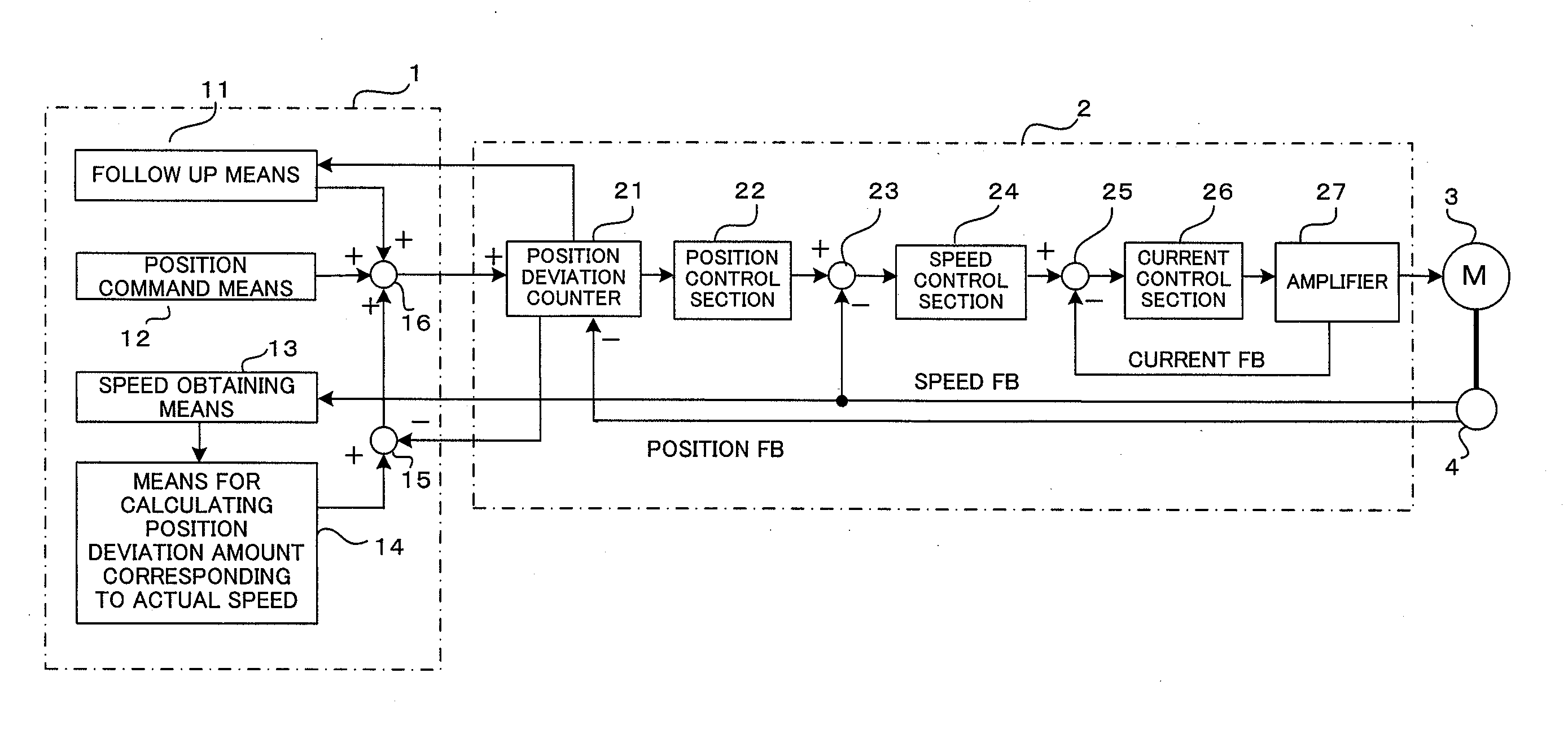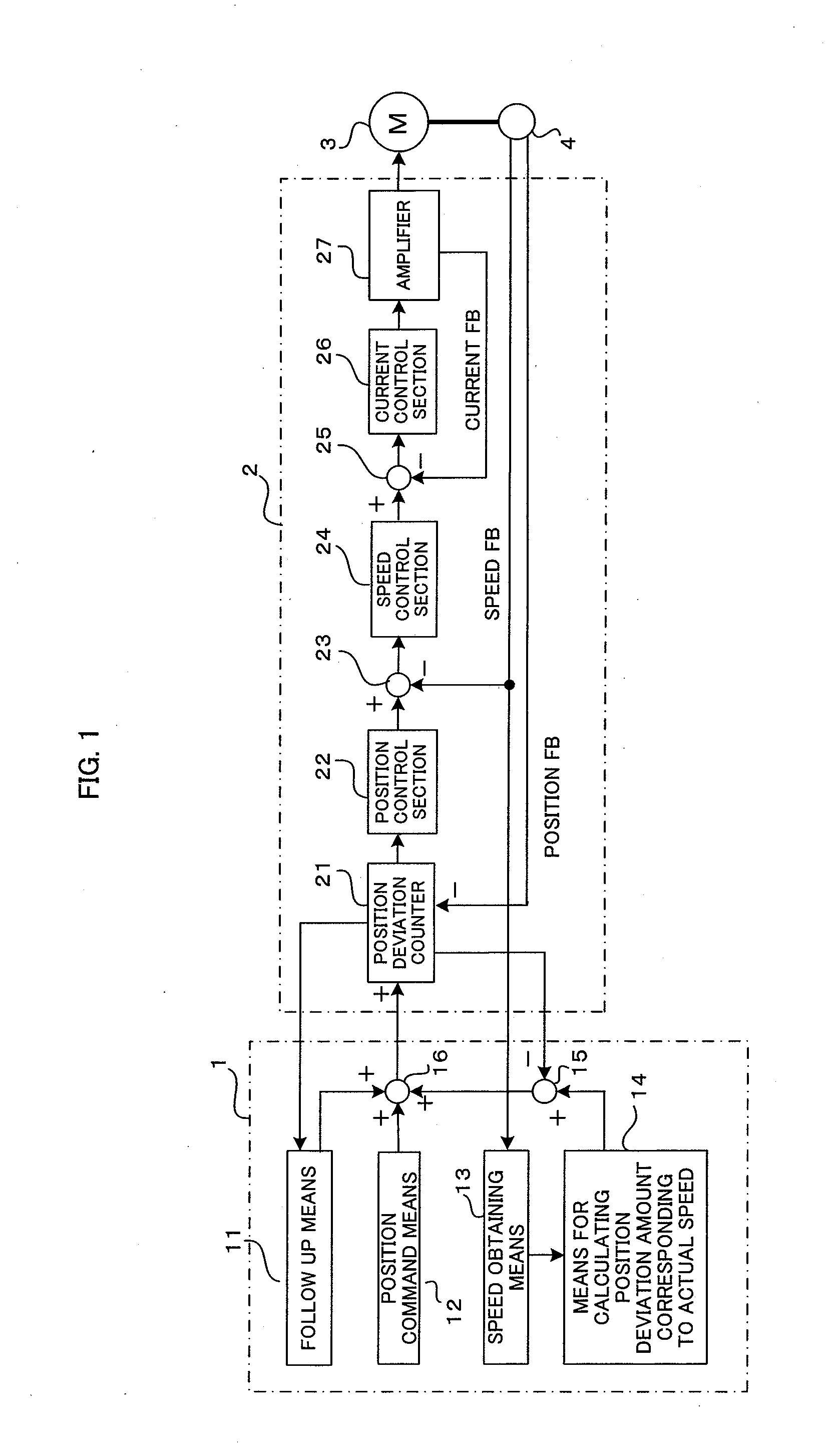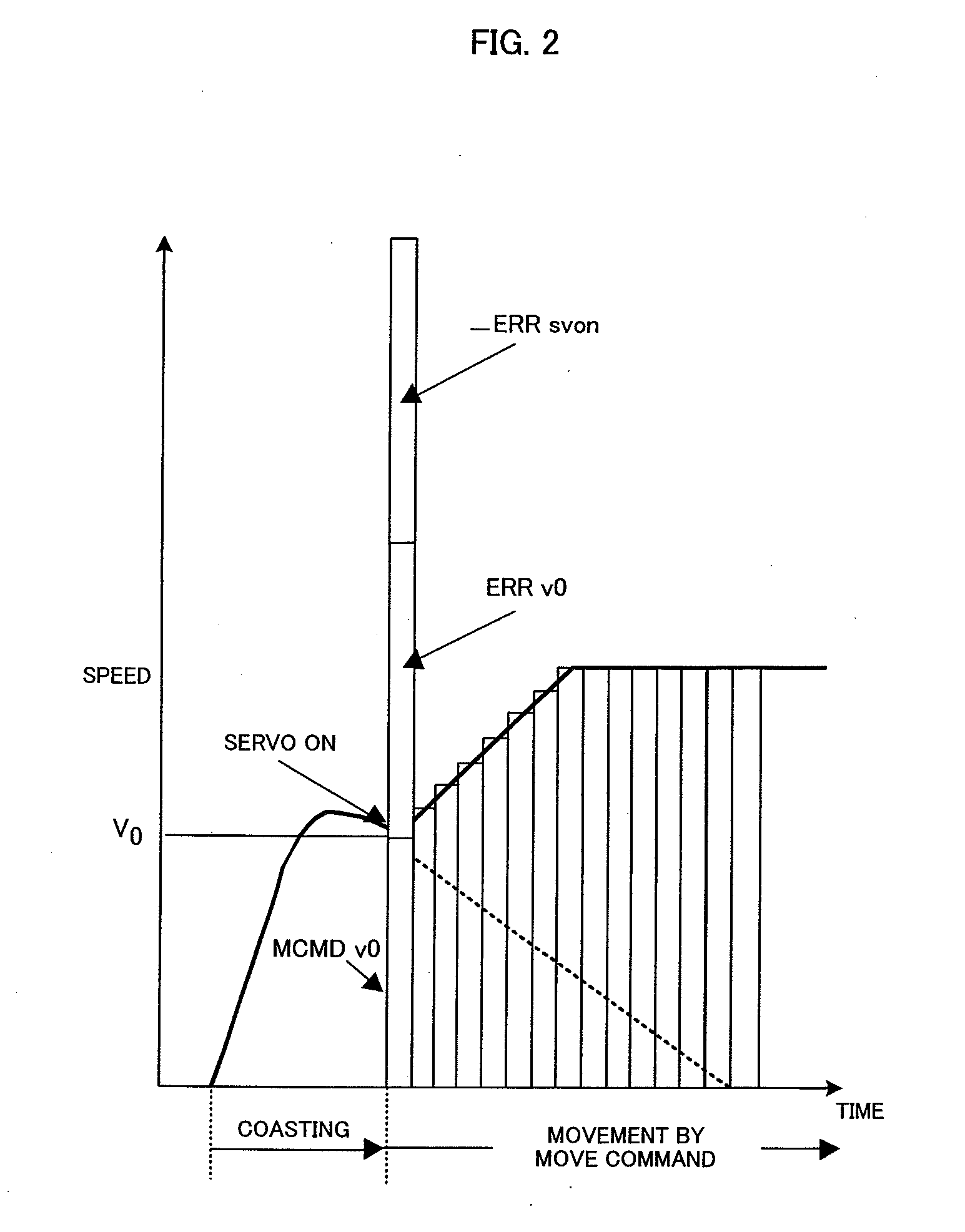Numerical controller controlling acceleration and deceleration of respective control axes up to command speeds
a controller and control axes technology, applied in the field of numerical controllers, can solve problems such as increasing the load applied to the connecting parts, increasing the load on the connecting parts, and the difference in the position between the control axes to gradually increase, so as to avoid abrupt speed changes, and reduce the load on the connecting parts.
- Summary
- Abstract
- Description
- Claims
- Application Information
AI Technical Summary
Benefits of technology
Problems solved by technology
Method used
Image
Examples
case b (see fig.10) : vcmd > v01 and vcmd > v02 [ 0077 ] if v01 > v02 , the initial speed in the move command is v01 , [ 0078 ] if v01 = v02 , the initial speed in the move command is v01 or v02 , and [ 0079 ] if v0102 , the initial speed in the move command is v02.[ 0080 ] case c (see fig.11) : vcmd01 and vcmd02 [ 0081 ] if v01 > v02 , the initial speed in the move command is v02 , [ 0082 ] if v01 = v02 , the initial speed in the move command is v01 or v02 , and [ 0083 ] if v0102 , the initial speed in the move command is v01.[ 0084 ] case d (see fig.12)
[0075]The following Cases B through D are examples of determining the initial speed in the move command at servo-on when the servomotors drive two control axes, in which the initial speed is set on the basis of the command speed and the comparative relationship between the actual speeds of the first and second control axes at servo-on. The move commands after servo-on are issued in the format as described with reference to Case A and FIG. 9. It is assumed that the speed instructed in the move commands after servo-on is VCMD, and the actual speeds of the first and second control axes at servo-on are v01 and v02, respectively.[0076]Case B (see FIG. 10): VCMD>v01 and VCMD>v02[0077]If v01>v02, the initial speed in the move command is v01,[0078]if v01=v02, the initial speed in the move command is v01 or v02, and[0079]if v0102, the initial speed in the move command is v02.[0080]Case C (see FIG. 11): VCMD01 and VCMD02[0081]If v01>v02, the initial speed in the move command is v02,[0082]if v...
PUM
| Property | Measurement | Unit |
|---|---|---|
| speed | aaaaa | aaaaa |
| speeds | aaaaa | aaaaa |
| acceleration | aaaaa | aaaaa |
Abstract
Description
Claims
Application Information
 Login to View More
Login to View More - R&D
- Intellectual Property
- Life Sciences
- Materials
- Tech Scout
- Unparalleled Data Quality
- Higher Quality Content
- 60% Fewer Hallucinations
Browse by: Latest US Patents, China's latest patents, Technical Efficacy Thesaurus, Application Domain, Technology Topic, Popular Technical Reports.
© 2025 PatSnap. All rights reserved.Legal|Privacy policy|Modern Slavery Act Transparency Statement|Sitemap|About US| Contact US: help@patsnap.com



